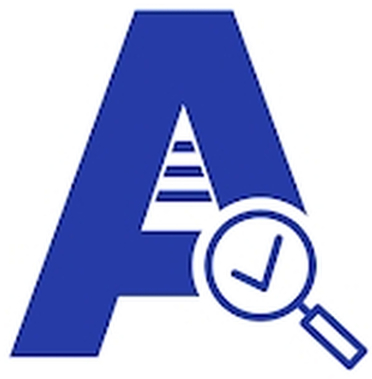Ergonomic Safety Audit Checklist
Conducting an ergonomic safety audit is essential to ensure that work environments are designed to prevent musculoskeletal disorders (MSDs) and promote employee well-being.
Here’s a comprehensive checklist for an ergonomic safety audit:

1. Workstation Layout
- Desk Height
- Ensure the desk height allows the forearms to be parallel to the ground.
- Adjustable desks should accommodate both sitting and standing positions.
- Chair
- Verify that chairs are adjustable in height, backrest, and armrests.
- Check for proper lumbar support and seat padding.
- Monitor Placement
- The top of the monitor should be at or just below eye level.
- Ensure monitors are an arm’s length away from the user.
- Keyboard and Mouse
- Keyboard should be at a height where the elbows are at 90 degrees.
- Mouse should be close to the keyboard to avoid overreaching.
2. Work Environment
- Lighting
- Ensure adequate lighting to reduce eye strain.
- Position lights to avoid glare on screens.
- Noise Levels
- Assess noise levels and provide noise-canceling options if necessary.
- Temperature and Ventilation
- Check for a comfortable temperature and proper air circulation.
3. Work Practices
- Posture
- Encourage employees to maintain neutral body positions.
- Monitor for slouching, leaning, or awkward postures.
- Breaks and Movements
- Ensure employees take regular breaks to stretch and move around.
- Promote the use of sit-stand desks to alternate positions.
- Task Variation
- Rotate tasks to prevent repetitive strain injuries.
- Design tasks to allow for varied movements.
4. Tools and Equipment
- Ergonomic Accessories
- Provide footrests, document holders, and wrist rests as needed.
- Ensure ergonomic tools (e.g., ergonomic keyboards, vertical mice) are available.
- Office Equipment
- Check that frequently used items are within easy reach.
- Ensure proper use and positioning of headsets, phones, and other equipment.
5. Training and Awareness
- Employee Training
- Conduct regular training on ergonomic best practices.
- Provide resources on maintaining proper posture and setting up workstations.
- Feedback and Reporting
- Establish a system for employees to report ergonomic issues.
- Regularly solicit feedback on workstation comfort and safety.
Ergonomic Safety Check Template (Example)
| Audit Item | Compliant (Yes/No) | Comments/Actions Required |
|---|---|---|
| Workstation Layout | ||
| Desk Height | ||
| Chair Adjustability | ||
| Monitor Placement | ||
| Keyboard and Mouse Placement | ||
| Work Environment | ||
| Adequate Lighting | ||
| Noise Levels | ||
| Temperature and Ventilation | ||
| Work Practices | ||
| Proper Posture | ||
| Regular Breaks | ||
| Task Variation | ||
| Tools and Equipment | ||
| Ergonomic Accessories | ||
| Office Equipment Positioning | ||
| Training and Awareness | ||
| Employee Training | ||
| Feedback and Reporting System |
Conducting the Ergonomic Safety Audit
- Preparation
- Review the ergonomic safety checklist and customize it to your workplace.
- Inform employees about the audit and its purpose.
- Workstation Evaluation
- Visit each workstation and use the checklist to assess ergonomic compliance.
- Take notes and photos to document areas of concern.
- Employee Interviews
- Talk to employees about their comfort and any ergonomic issues they face.
- Gather feedback on existing ergonomic practices and tools.
- Analysis and Reporting
- Compile the findings into a comprehensive report.
- Highlight areas of non-compliance and provide recommendations for improvement.
- Implementation of Improvements
- Address ergonomic issues by making necessary adjustments and providing ergonomic tools.
- Schedule follow-up audits to ensure changes are effective.
Choosing the eAuditor Audits & Inspections for Ergonomic Safety Audit


- Customizable Checklists: Ability to create and modify ergonomic checklists.
- Photo and Video Capture: To document issues visually.
- Real-Time Data Entry: Input findings during the audit.
- Offline Functionality: Conduct audits without internet access.
- Reporting and Analytics: Generate and analyze reports.
- Integration Capabilities: Sync with other systems like HR or facilities management software.
Setting Up the eAuditor Audits & Inspections for Ergonomic Safety Audit
- Create or Import Checklists
- Use the ergonomic safety checklist provided below to create a template within the eAuditor Audits & Inspections.
- Customize fields to match specific needs (e.g., adding unique equipment or environmental factors).
- Assign Roles
- Determine who will conduct the ergonomic checks and assign them within the eAuditor Audits & Inspections.
- Provide necessary training on using the mobile eAuditor Audits & Inspections.
- Schedule Audits
- Set up recurring ergonomic safety checks to ensure regular assessment.
- Use reminders and notifications to prompt auditors.


Conducting the Ergonomic Safety Audit
- Preparation
- Download the checklist if the audit will be conducted offline.
- Workstation Evaluation
- Open the checklist in the eAuditor Audits & Inspections.
- Perform the inspection, checking each item and entering data directly into the eAuditor Audits & Inspections.
- Use the photo capture feature to document any issues or areas of concern.
- Employee Interviews
- Talk to employees about their comfort and any ergonomic issues they face.
- Gather feedback on existing ergonomic practices and tools.
- Analysis and Reporting
- Compile the findings into a comprehensive report using the eAuditor Audits & Inspections’ reporting features.
- Highlight areas of non-compliance and provide recommendations for improvement.
- Implementation of Improvements
- Address ergonomic issues by making necessary adjustments and providing ergonomic tools.
- Schedule follow-up audits to ensure changes are effective.
Example Using eAuditor Audits & Inspections
- Create Ergonomic Checklist
- Open eAuditor Audits & Inspections and navigate to the templates section.
- Create a new template or use a pre-existing ergonomic checklist template.
- Customize Fields
- Add specific fields relevant to your workplace (e.g., monitor height, chair adjustments).
- Include sections for photos, comments, and ratings.
- Conduct Audit
- Use the eAuditor Audits & Inspections to conduct the ergonomic audit.
- Check each item in the checklist, take photos of any issues, and add comments as needed.
- Generate Report
- Once the audit is complete, use eAuditor to generate a detailed report.
- Share the report with relevant stakeholders and assign corrective actions.
- Follow-Up
- Schedule follow-up audits in eAuditor to ensure that ergonomic issues are addressed and improvements are maintained.
By systematically reviewing these areas, you can help create a safer, more comfortable work environment that reduces the risk of injuries and enhances productivity. Regular ergonomic audits and proactive adjustments are key to maintaining optimal workplace ergonomics.
- Schedule follow-up audits in eAuditor to ensure that ergonomic issues are addressed and improvements are maintained.
